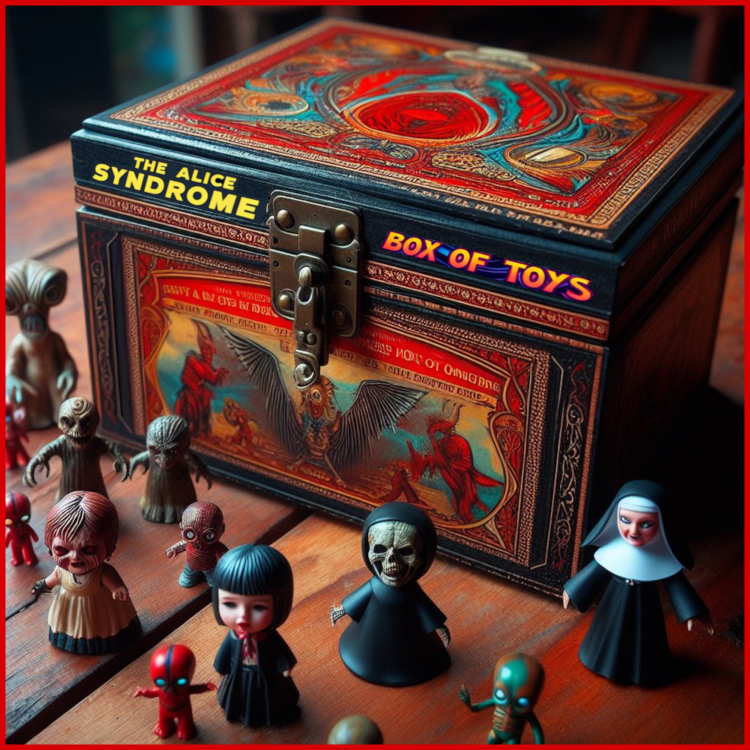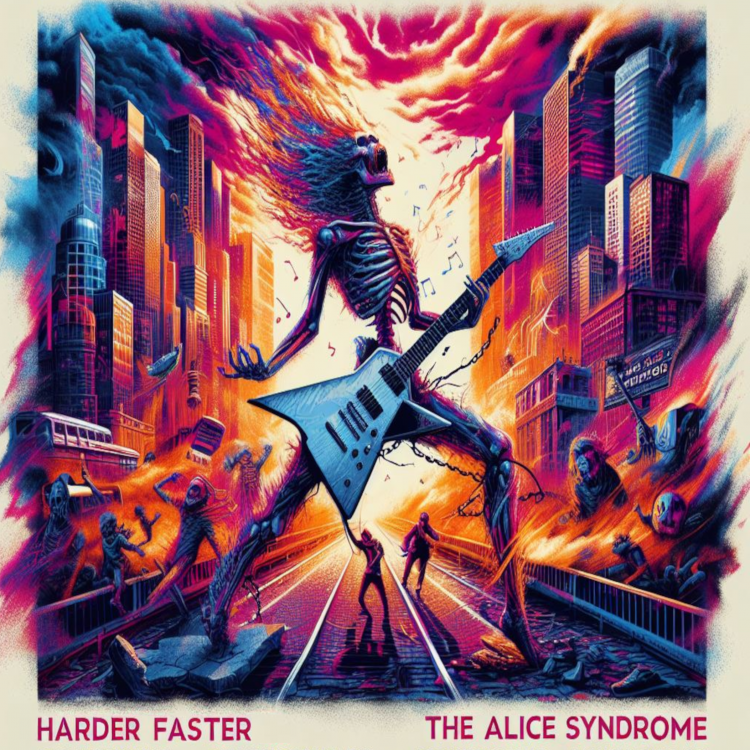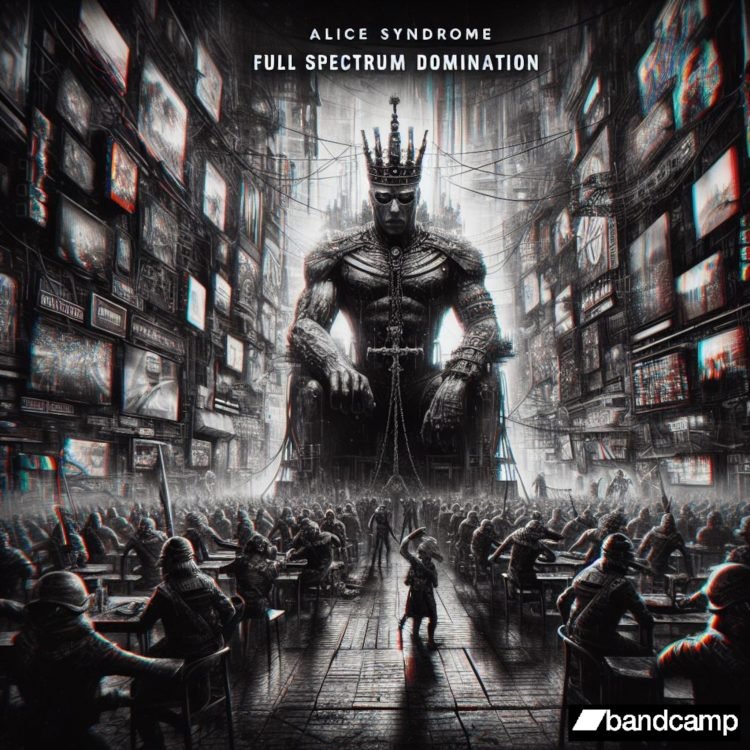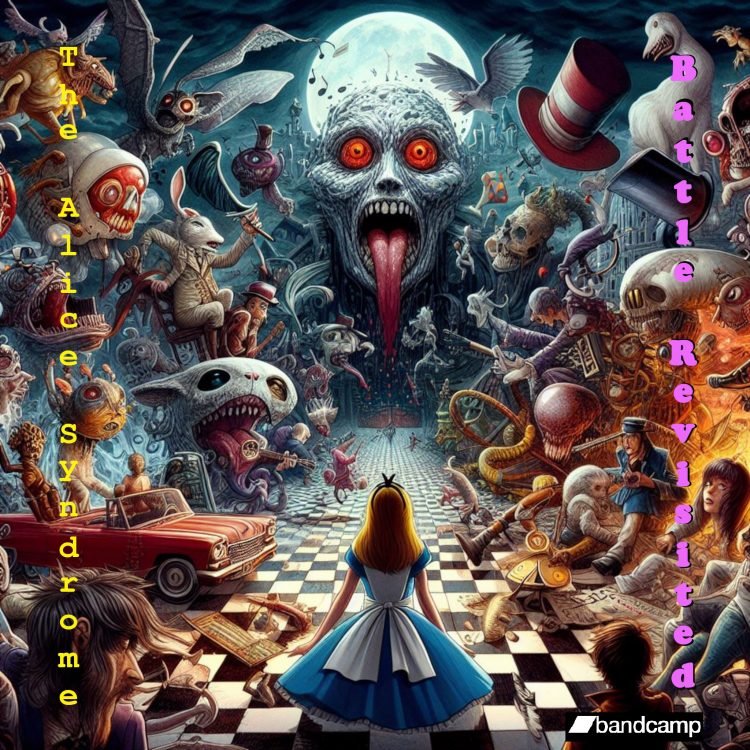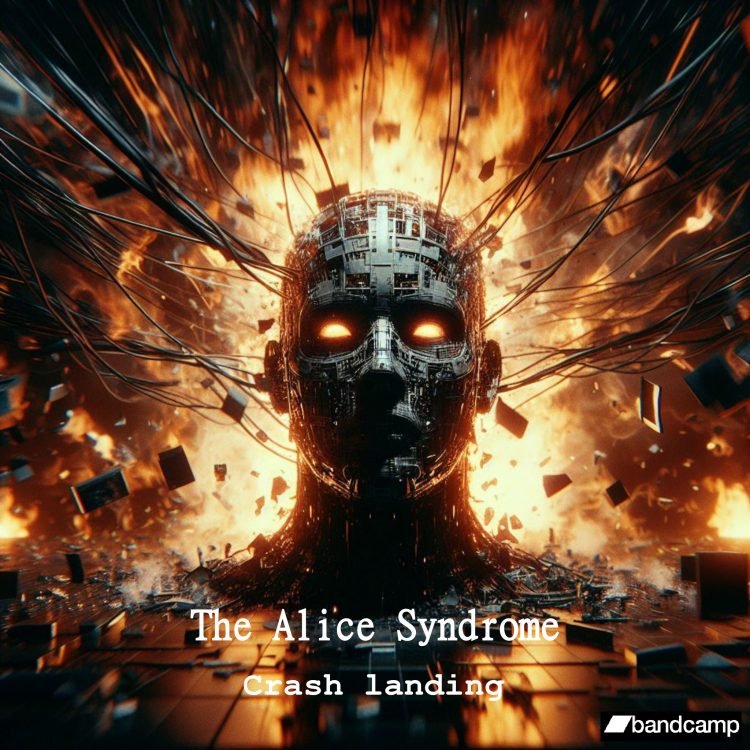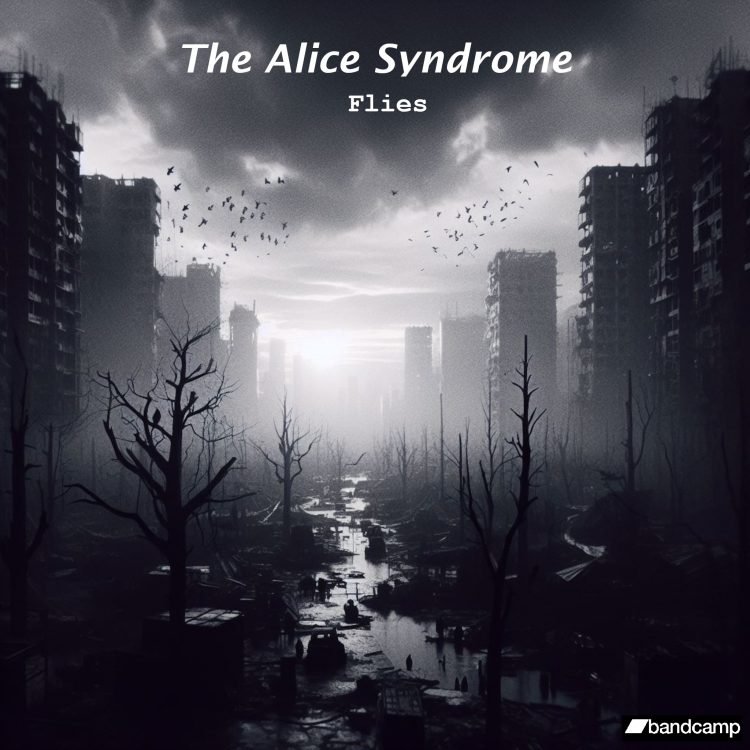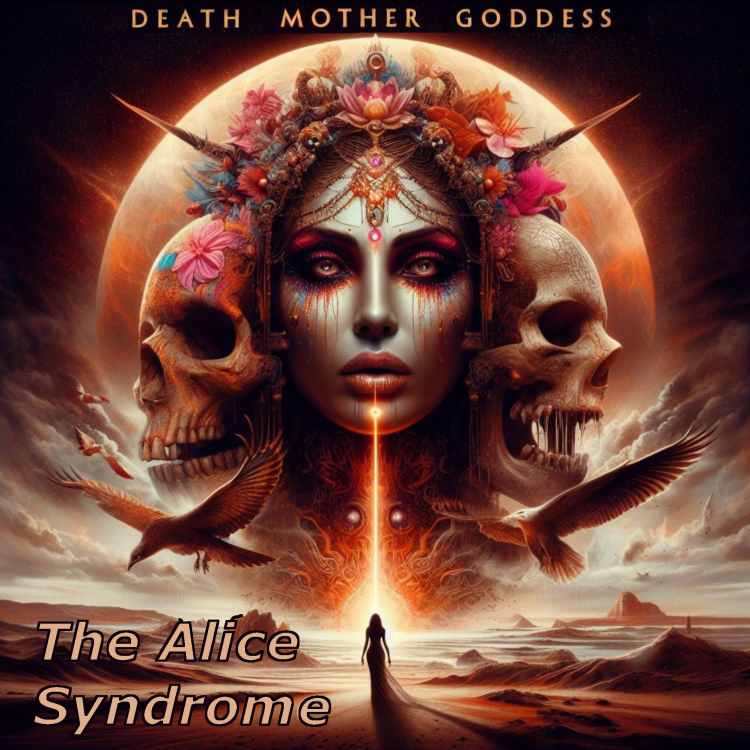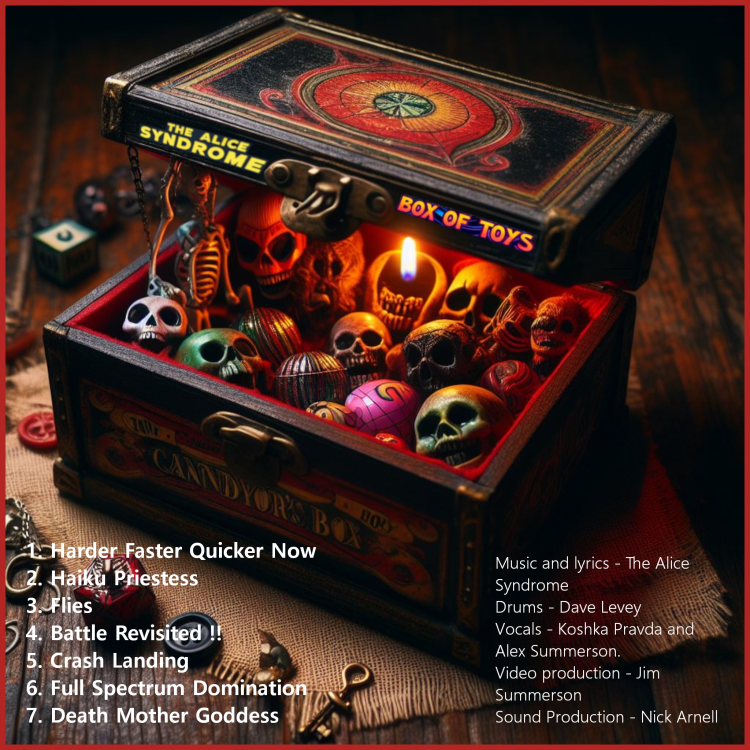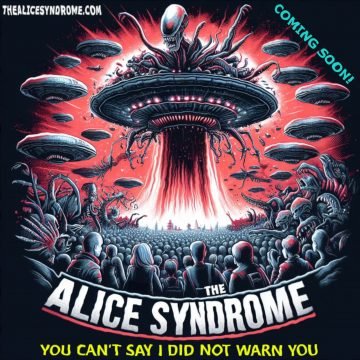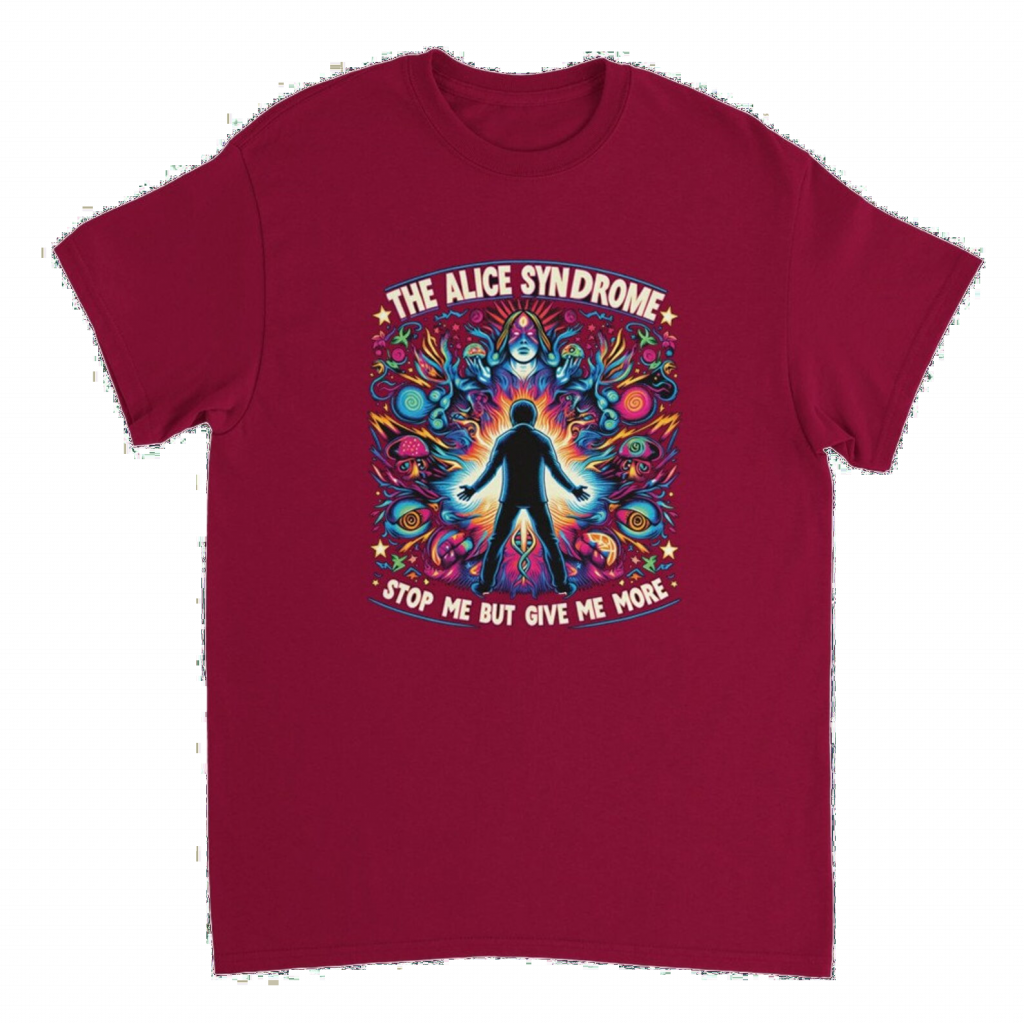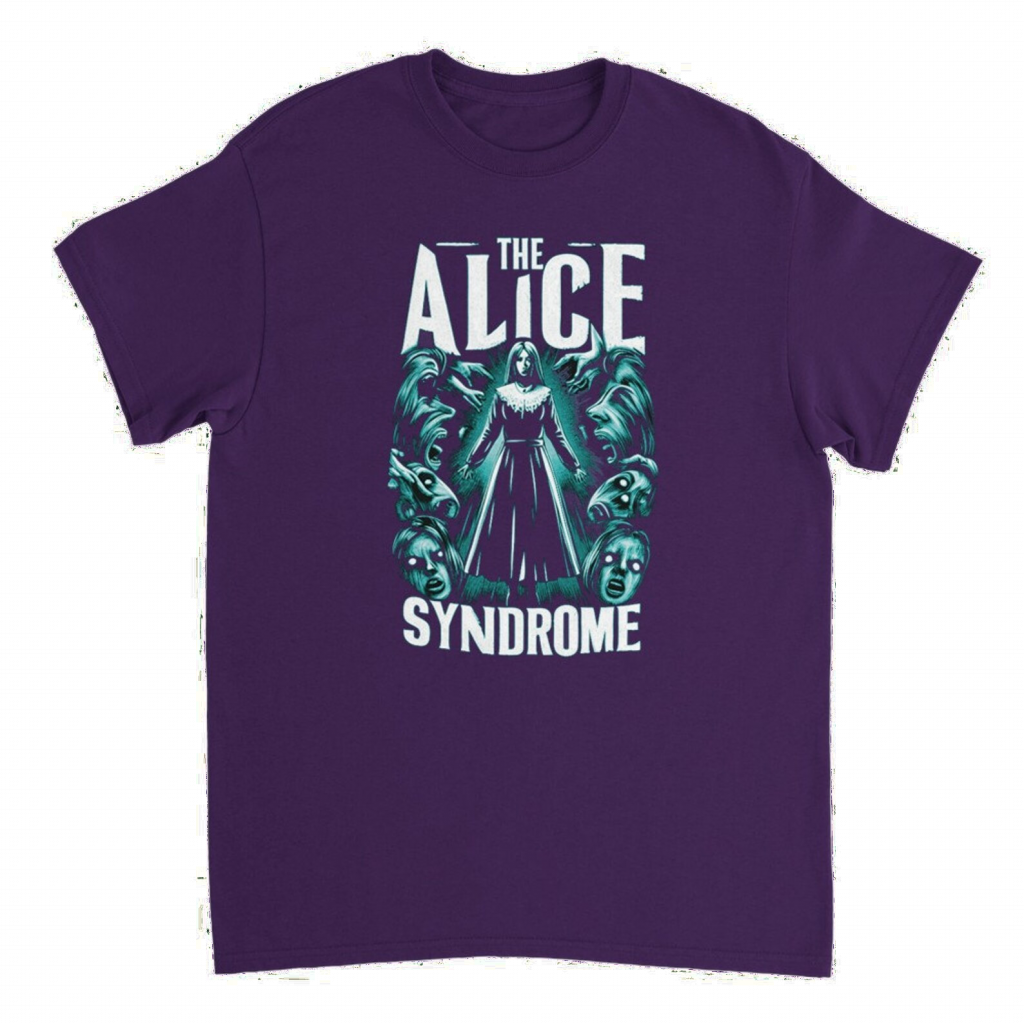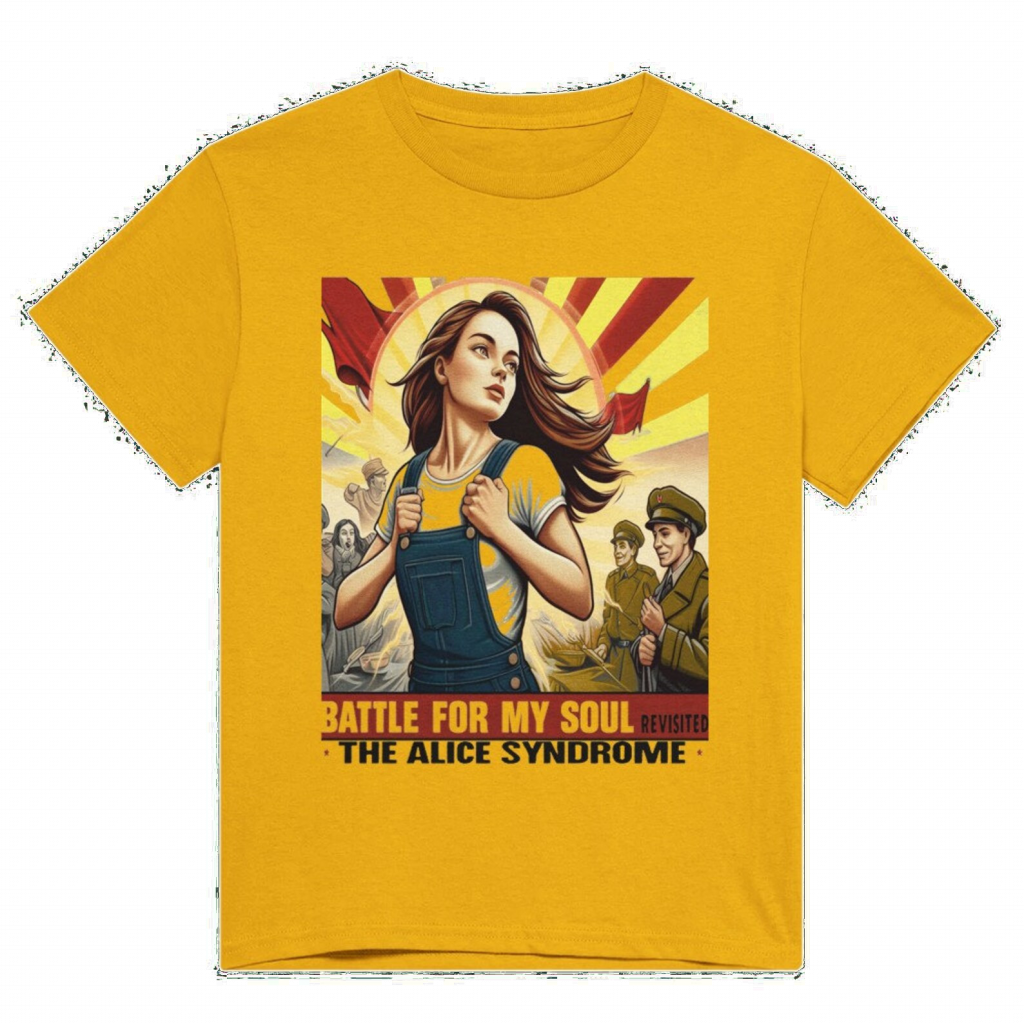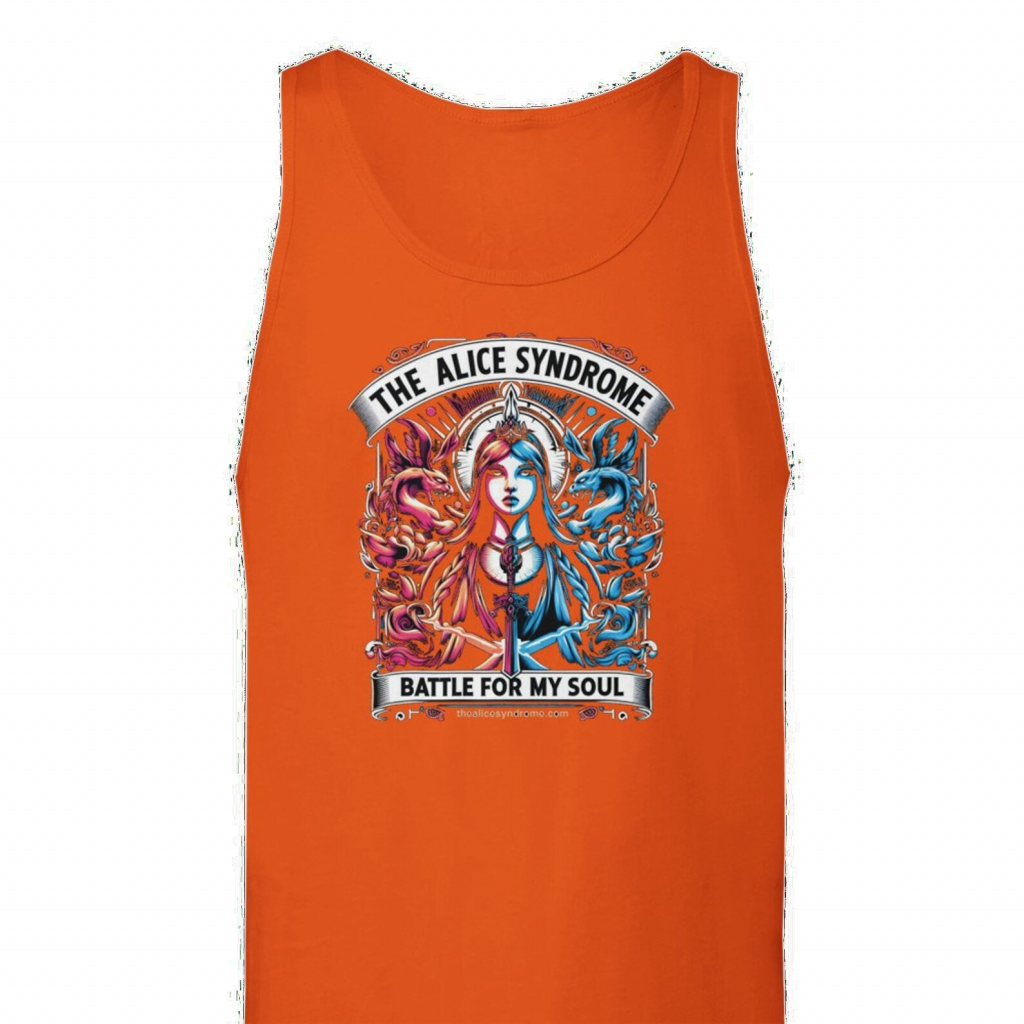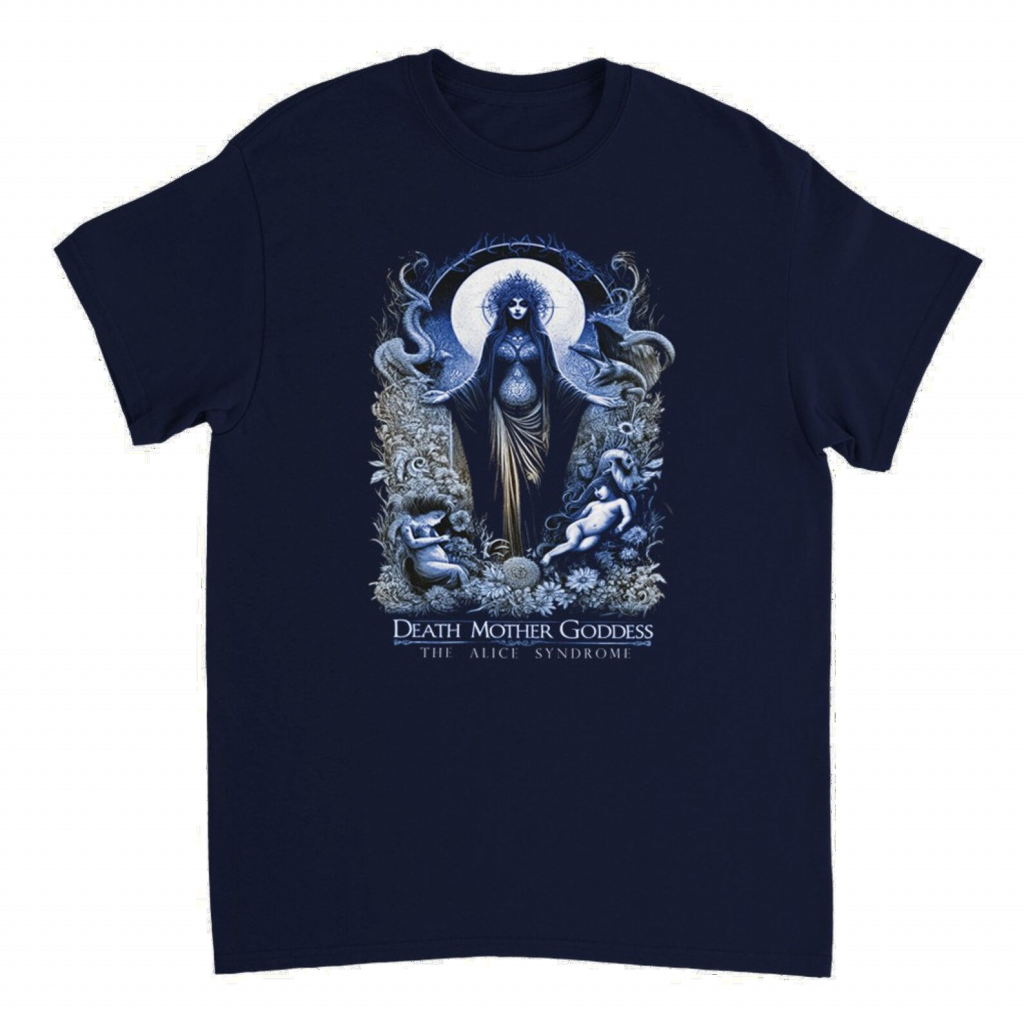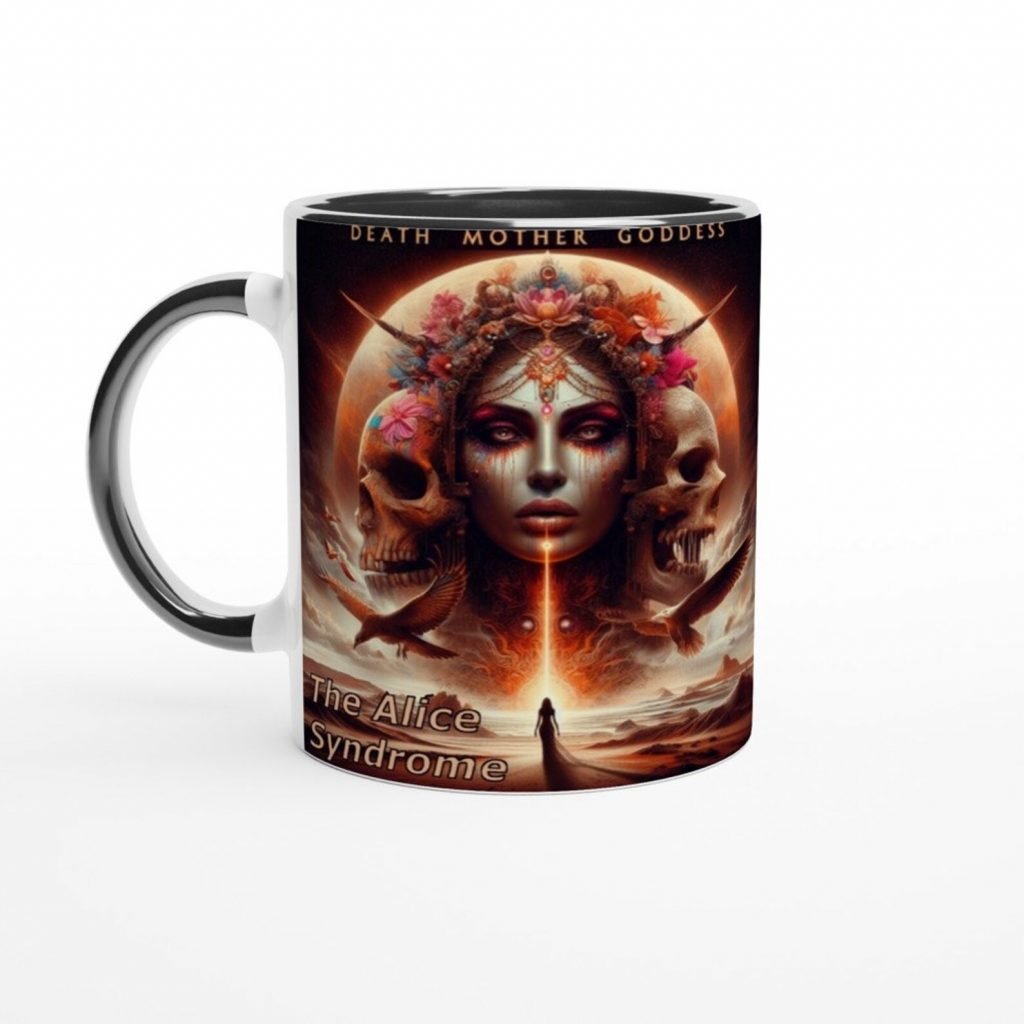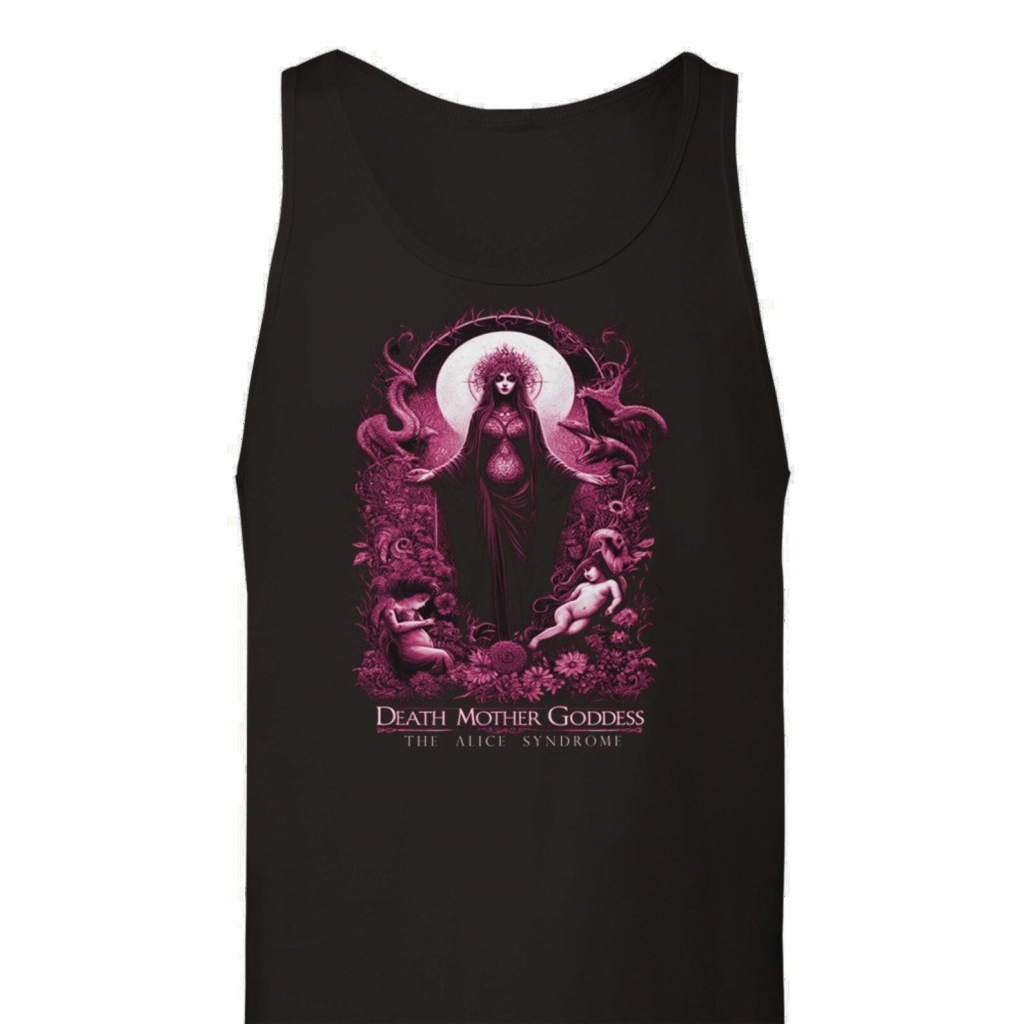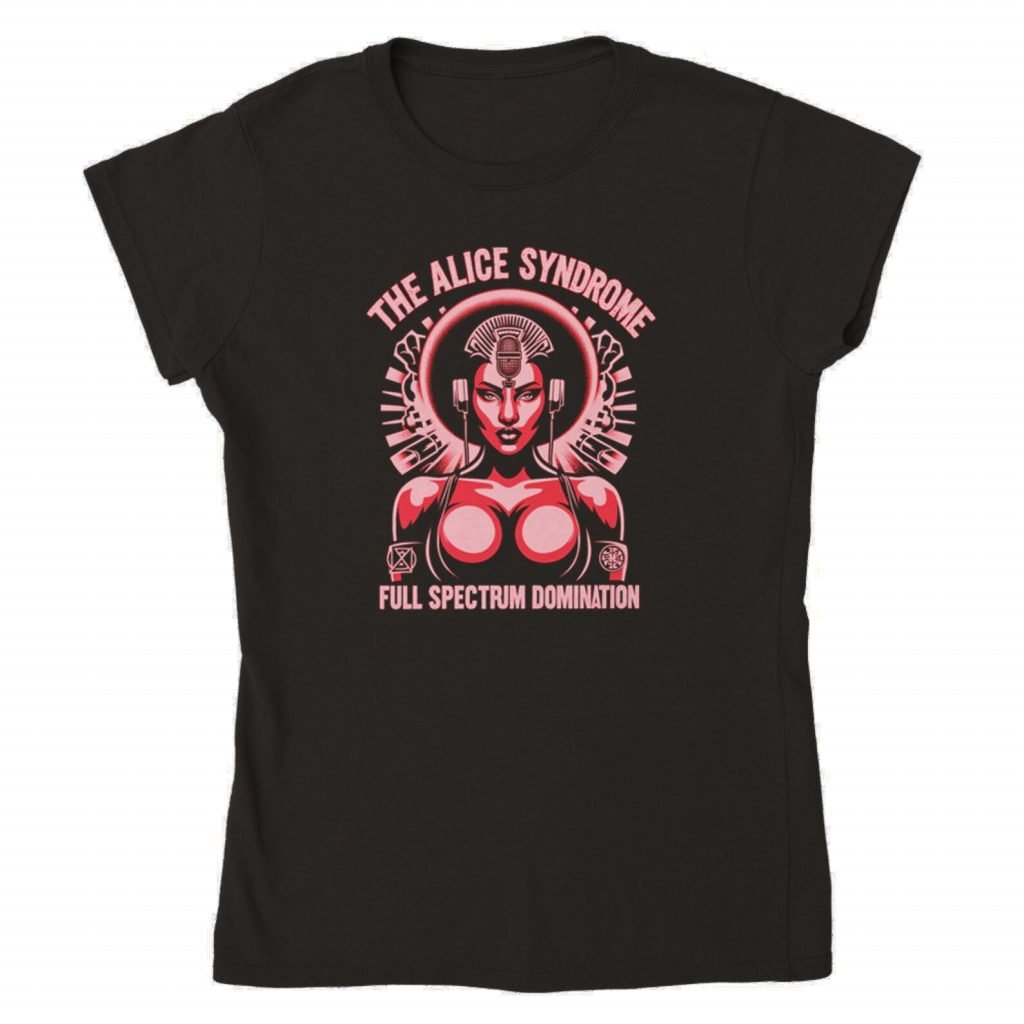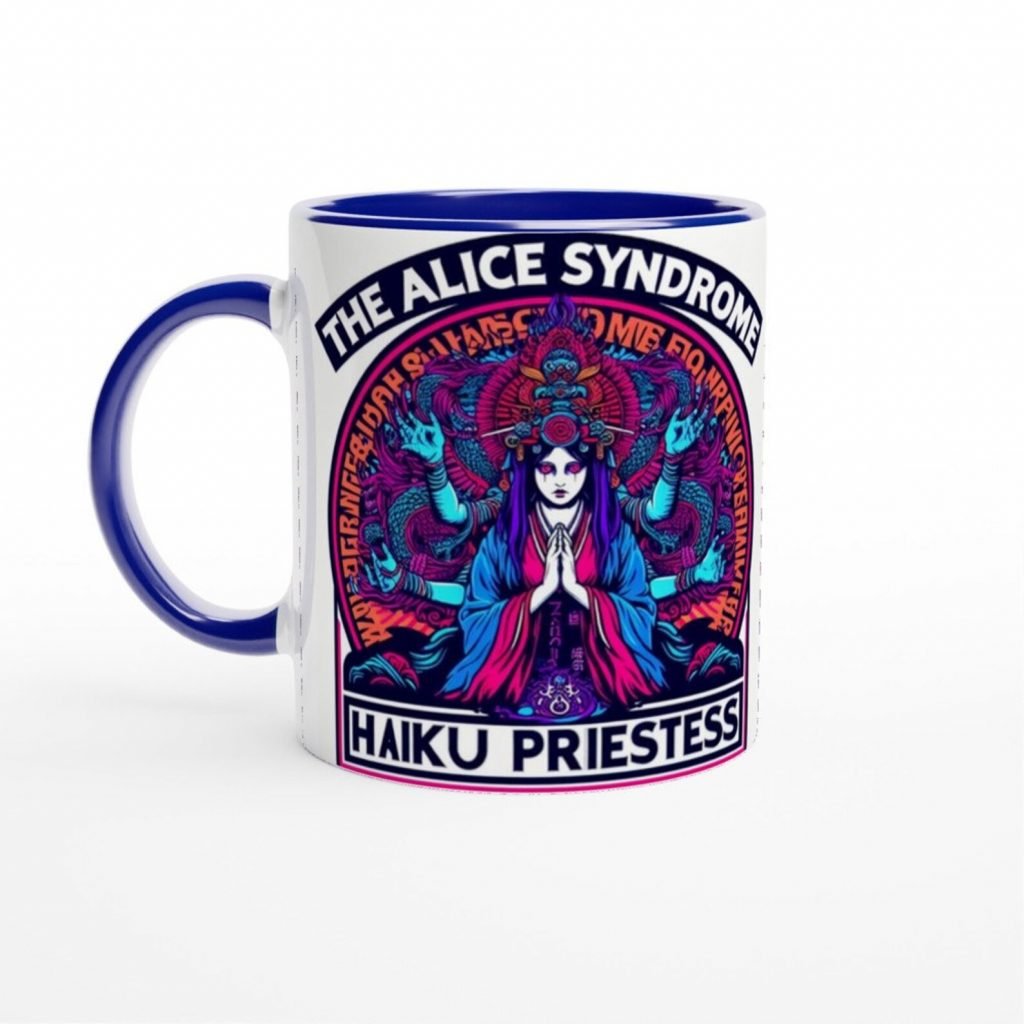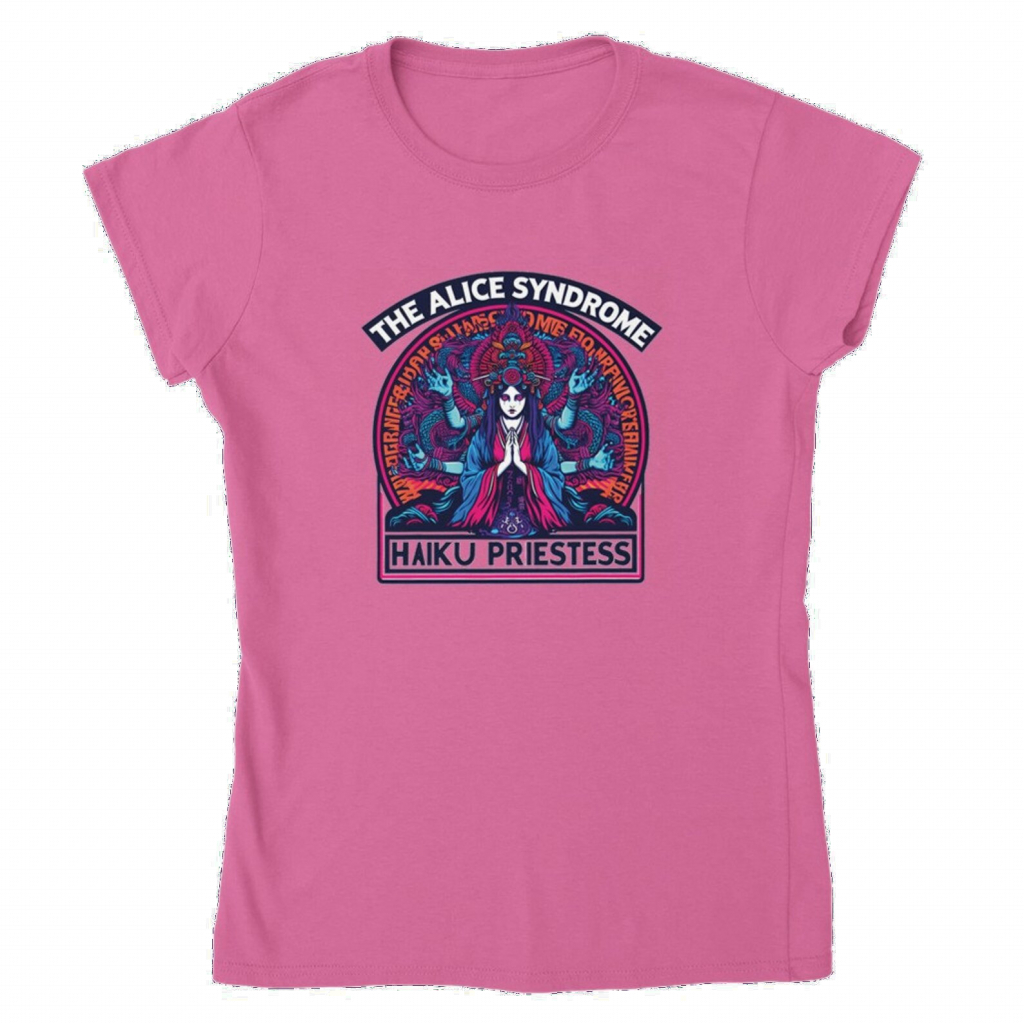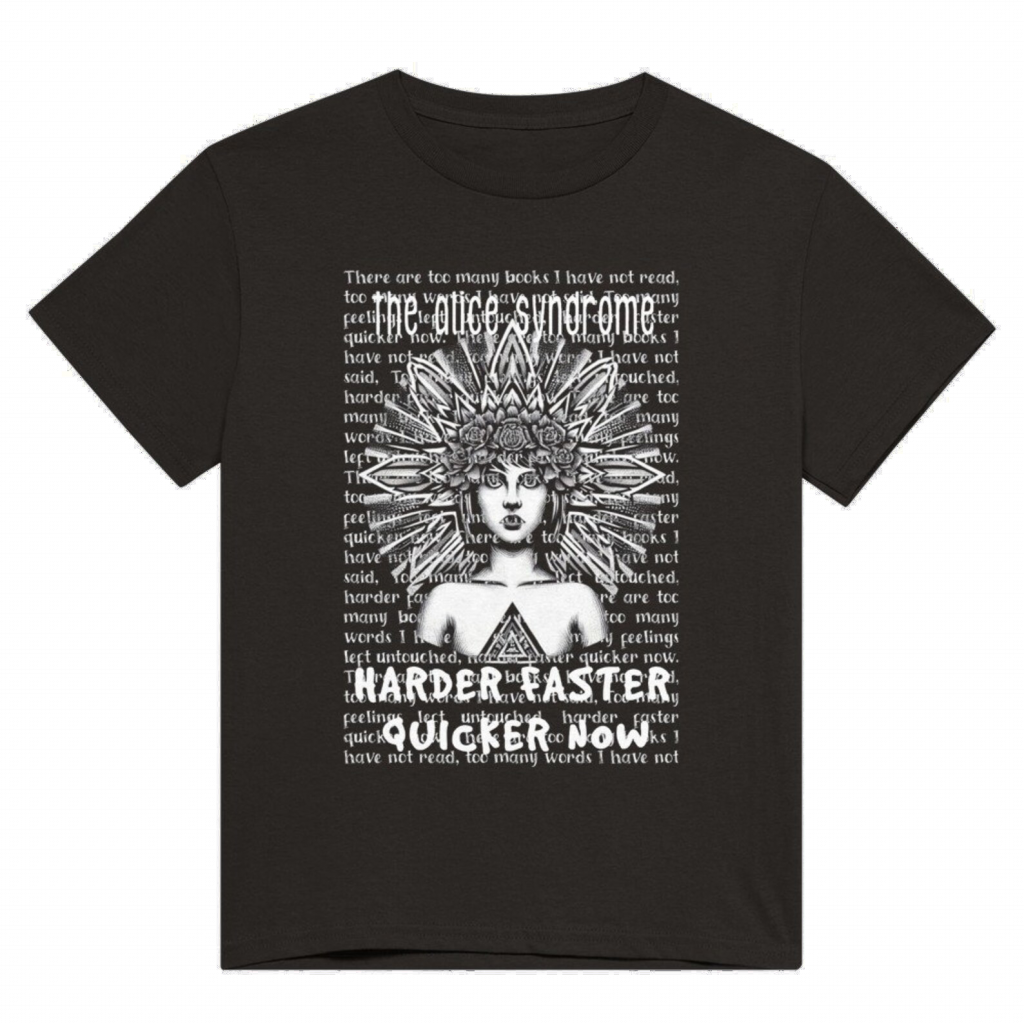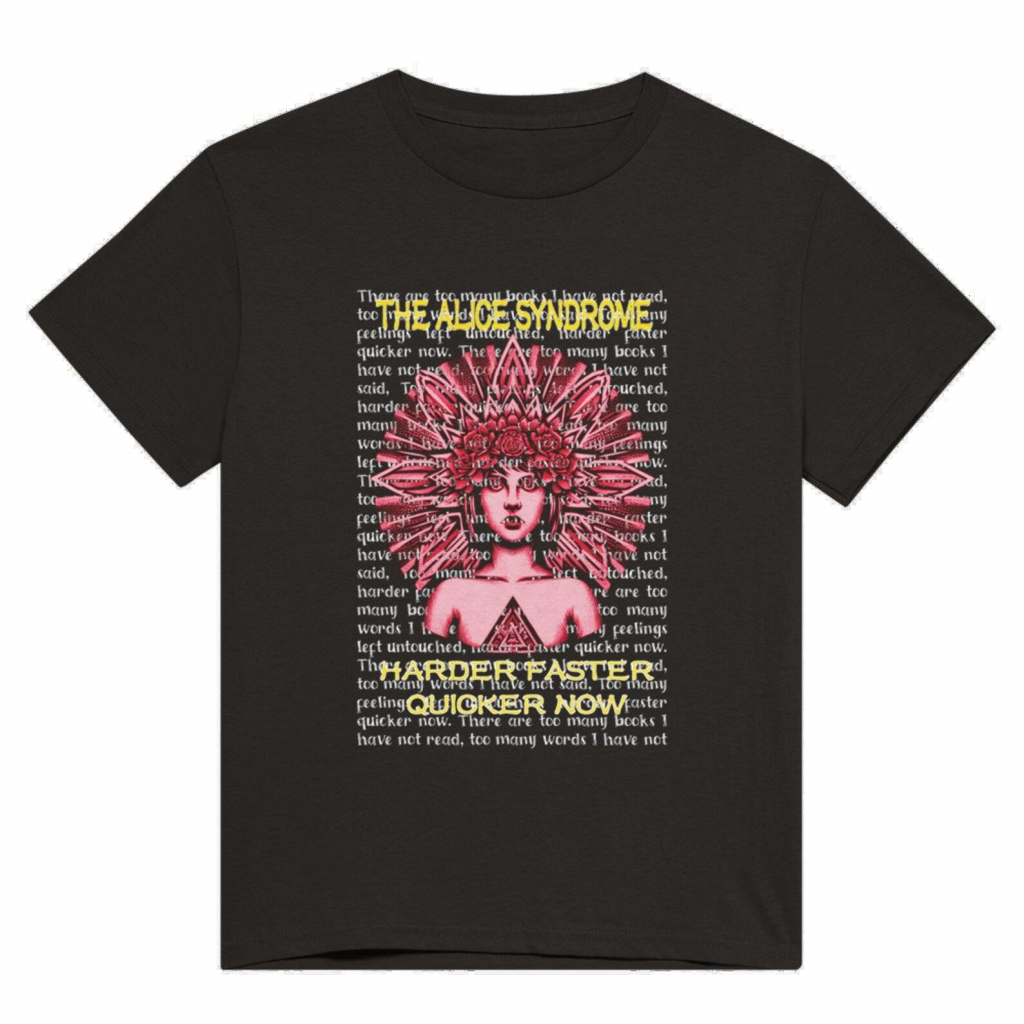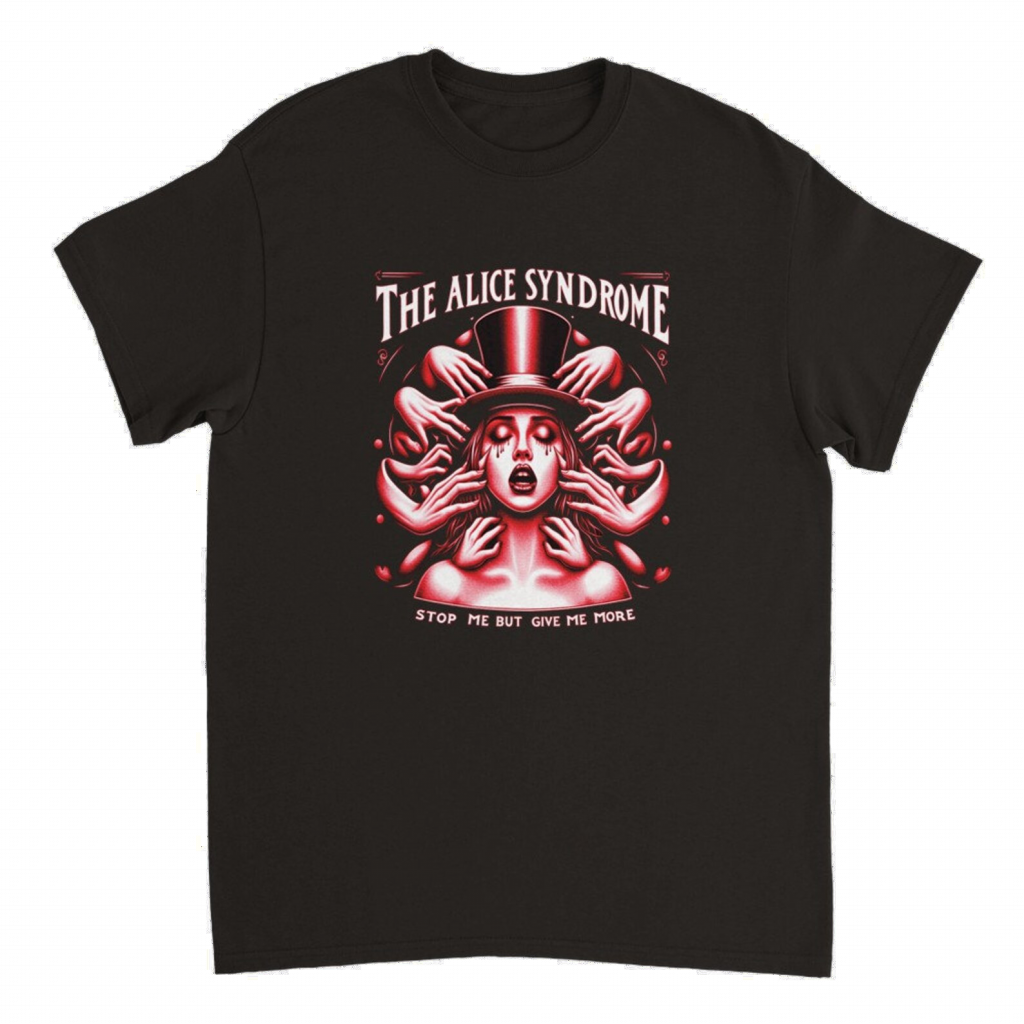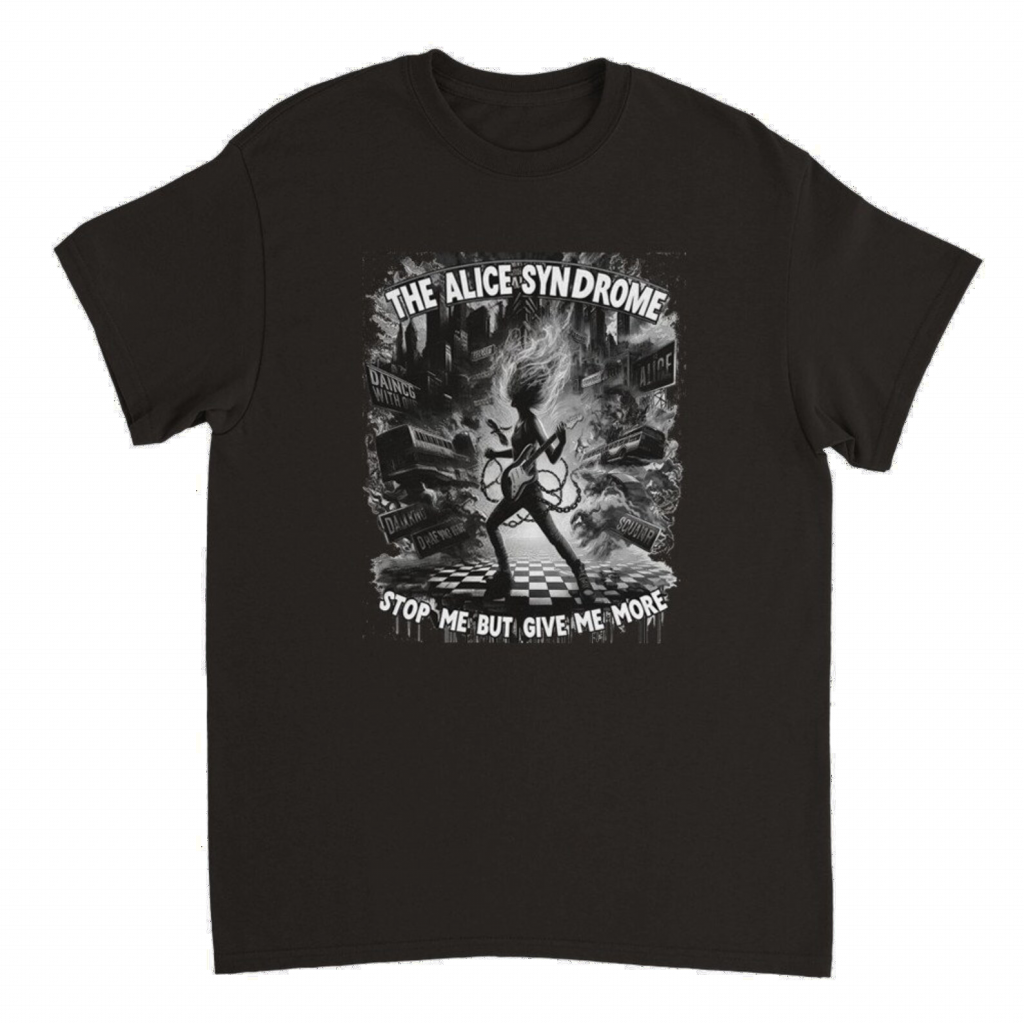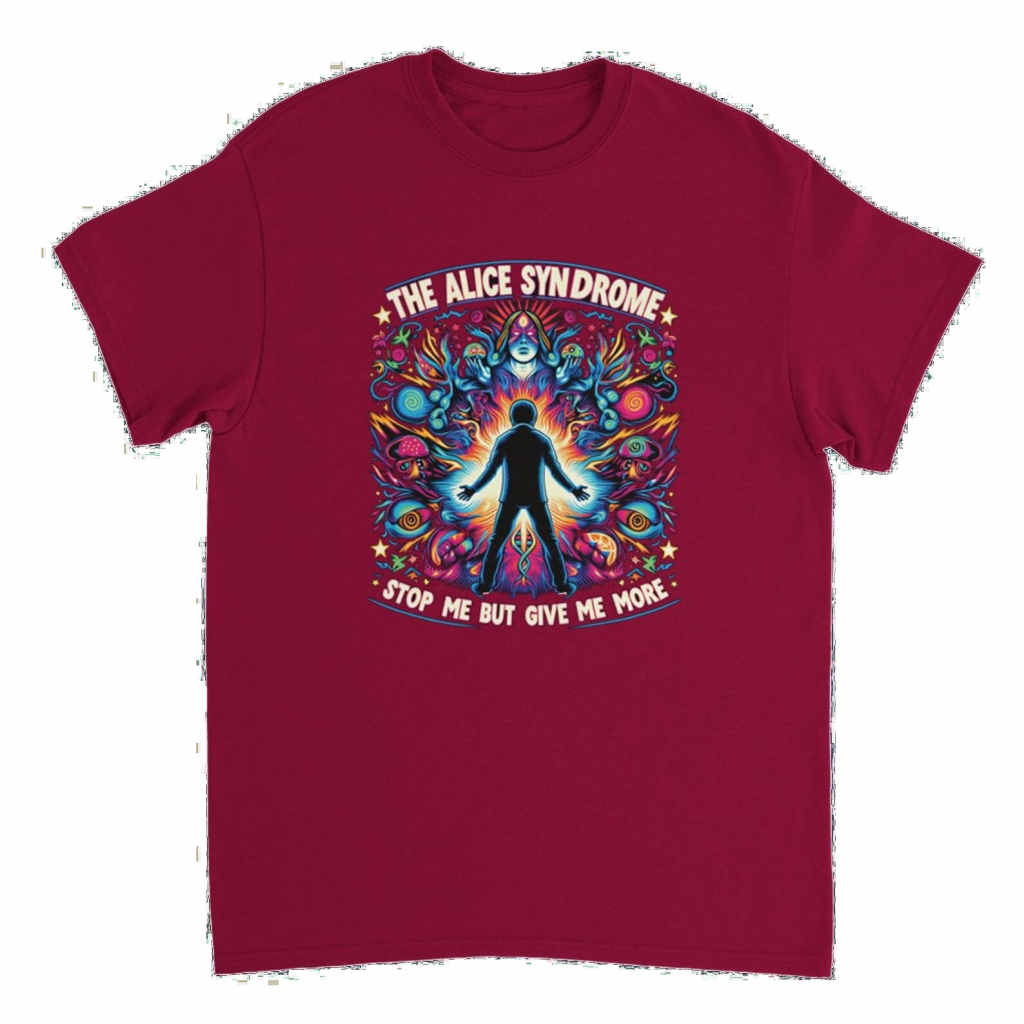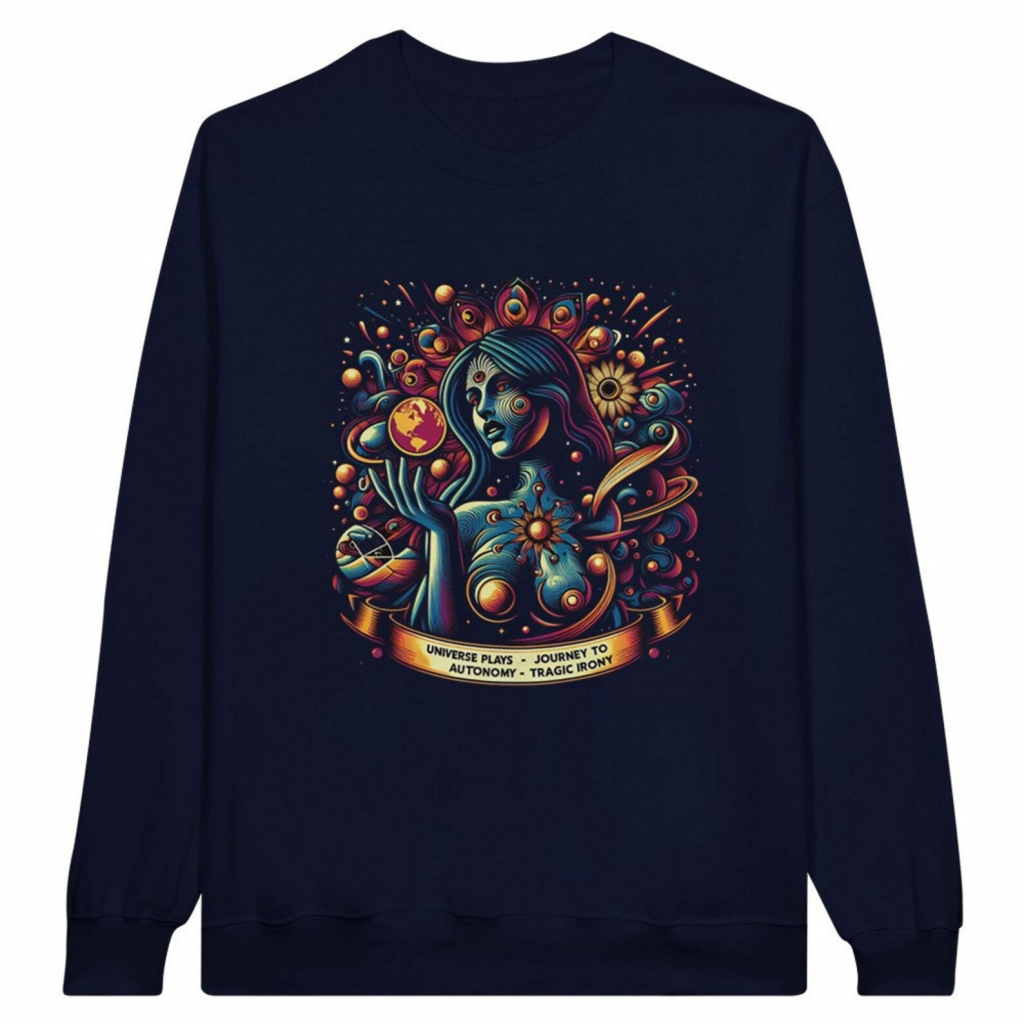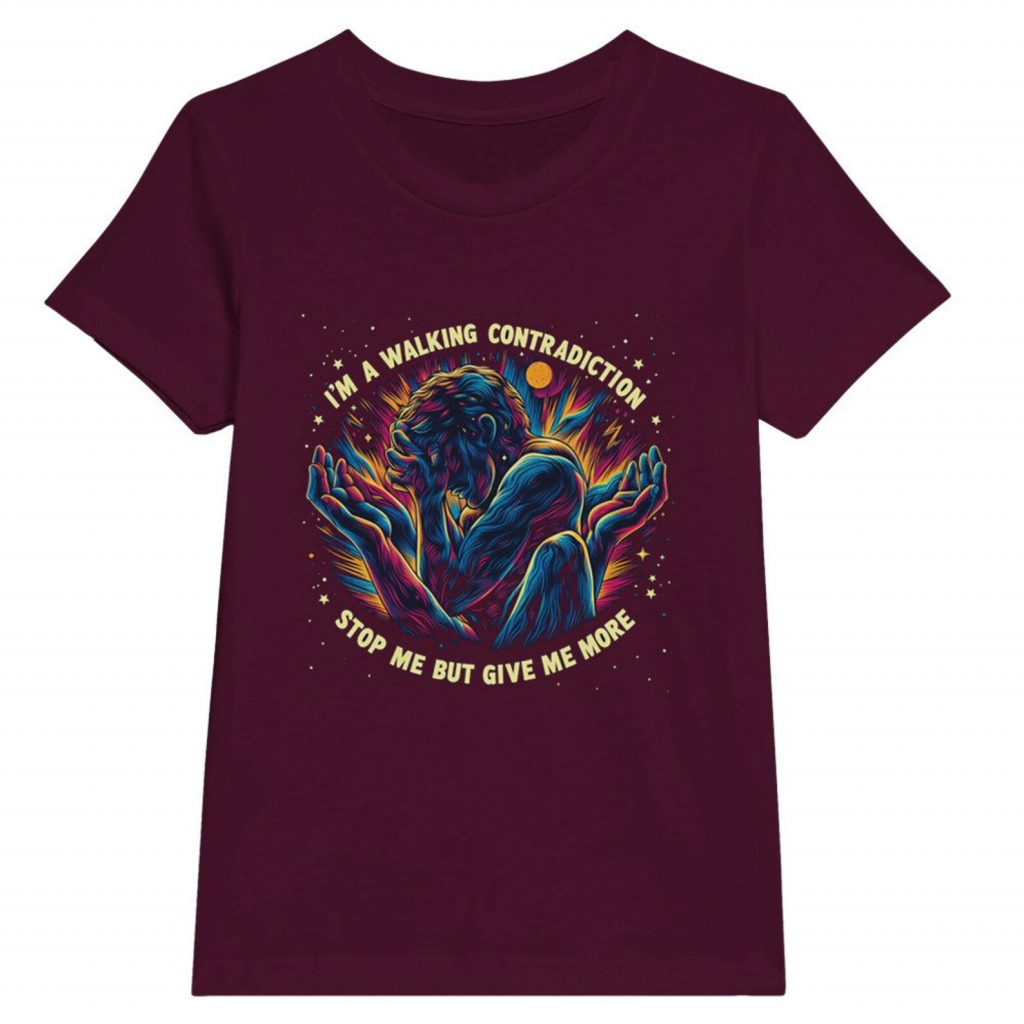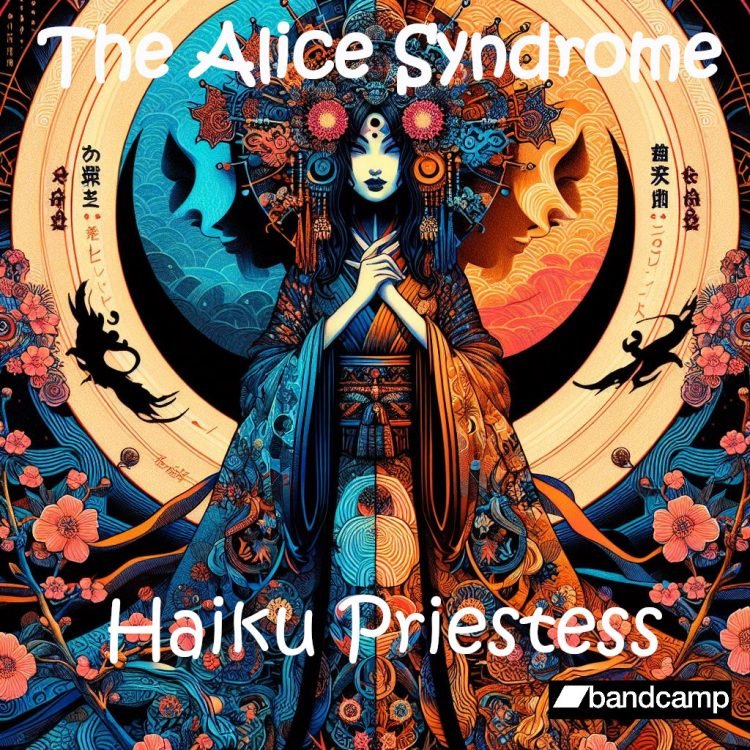
Welcome to George’s blog. I play keyboards in the Alice Syndrome, and I’m also very interested in psychology, spirituality and self-transcendence. Groovhead tends to write all our lyrics, which always touch on subjects that hit deep into my interests.
Haiku Priestess sings
Of love and loss and madness
In her broken voice
She paints with words and sounds
A world of dark and light
Where nothing is as it seems
She invites us to join her
In her twisted dreams and visions
Where we can find ourselves
Haiku Priestess knows
The secrets of the soul and the heart
She shares them with her art
Haiku Priestess
Our track, “Haiku Priestess”, is a tribute to the Japanese art of haiku, a form of short poetry that captures the essence of a moment. The song explores themes such as nature, beauty, spirituality and death, using imagery and metaphors inspired by haiku.
The singer, Koshka Pravda, plays the role of a priestess who guides the listener through a journey of emotions and sensations, from the serene to the sublime. The marvellous Alex accompanies Koshka with tuneful background melodies.
The music matches the mood of the lyrics, with soft tunes, heavy riffs and atmospheric sounds.

The video that accompanies Haiku Priestess was put together by Jim and is a stunning visual representation of the song’s themes and mood. It uses a mix of animation and live-action footage to create a surreal and captivating atmosphere.
The song follows the journey of a woman trapped in a cycle of violence, pain, and rebirth. She encounters various symbolic elements, such as a snake, a flower, a gun, and a mask, that reflect her inner turmoil and transformation.
There are also references to Japanese culture and mythology, such as the haiku poems, the cherry blossoms, and the kitsune mask. It enhances the overall song by adding more layers of meaning and emotion to the lyrics and the music.

The Alice Syndrome – Haiku Priestess
Wisdom of the haiku
Haiku Priestess explores the inner turmoil of a woman who is trapped in a cycle of self-destruction and despair. The lyrics suggest that she is suffering from a mental disorder that makes her perceive reality in a distorted way, such as seeing herself as a monster or feeling like she is drowning.
She also expresses a sense of loneliness, isolation and hopelessness, as she feels that no one can understand or save her from her pain. She compares herself to a haiku priestess, a poetic figure who writes short poems that capture the essence of nature and emotion, but also implies a sense of futility and resignation.
The song relates to the human condition by showing how some people struggle with their own demons and how they cope with their suffering through art and creativity. The song also raises questions about the meaning and purpose of life, as well as the role of faith and spirituality in healing. The song portrays potential great sadness, but is also beautiful and poignant, as it conveys a deep and complex emotion that will resonate with many listeners.
Haiku Priestess is a powerful expression of the struggle to heal from trauma. The lyrics could be interpreted as the singer, trying to do Jungian type shadow work, which is a process of confronting and integrating the repressed aspects of one’s psyche.

Shadow work
Shadow work is a psychological process of healing and integration. It is based on the idea that we all have parts of ourselves that we repress or deny due to negative or traumatic experiences, especially in childhood. These parts, called the shadow, are stored in the unconscious mind and affect our behaviour, emotions and relationships in ways that we are not aware of.
For instance, a child who suffers from abuse may develop anxiety and fear, and may reject the part of themselves that feels vulnerable and hurt. This part becomes a shadow that influences their self-esteem, trust and coping mechanisms throughout their life. They may resort to unhealthy habits, such as alcoholism, or other addiction, to escape from their pain and avoid facing their shadow.
Shadow work involves uncovering and confronting the shadow, and accepting it as a valid and valuable part of ourselves. By doing so, we can heal the wounds that caused us to split off from our wholeness, and reclaim the aspects of ourselves that we have lost or neglected. Shadow work can either be voluntary, where the individual consciously looks inside themselves to explore their unconscious selves, it can also be involuntary, when the shadows surface into the conscious mind, often in ways that threaten to overwhelm the person concerned.
Shadow work can help us to overcome our fears, insecurities and limiting beliefs, and to develop more self-awareness, compassion and authenticity. As Jung (1959) said, “One does not become enlightened by imagining figures of light, but by making the darkness conscious” (p. 326).
There are many methods and techniques for doing shadow work, such as journaling, meditation, dream analysis, art therapy, psychotherapy, and even by writing haiku’s. The goal is to create a safe and supportive space where we can explore our inner world and discover the hidden parts of ourselves that need our attention and acceptance. By doing so, we can integrate our shadow into our conscious personality, and achieve a more balanced and harmonious state of being.
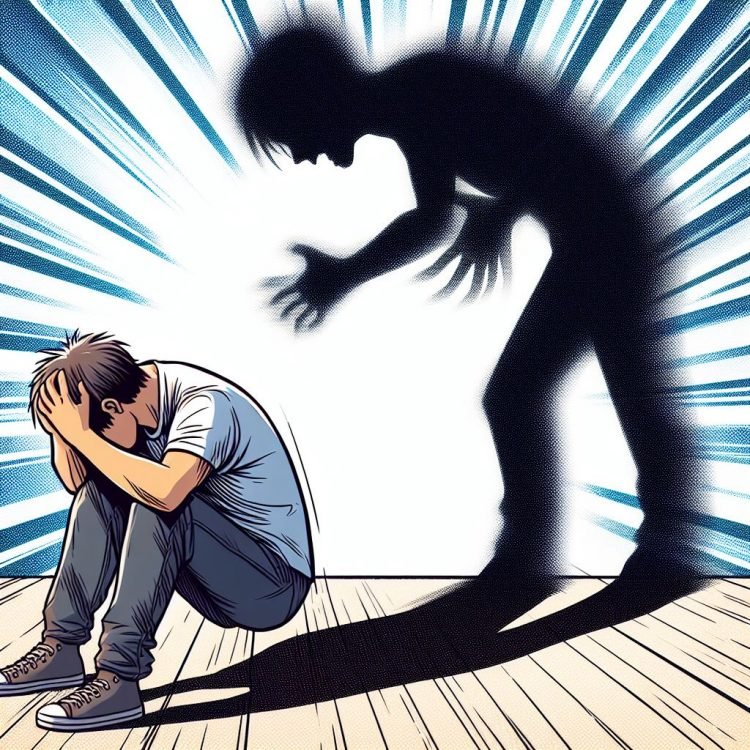
Becoming overwhelmed
However, the singer finds that the feelings that are being uncovered are too overwhelming and painful to face. She feels like she is drowning in a sea of darkness and despair.
Becoming overwhelmed can be very dangerous for the individual, people can often lose their judgement and control when overwhelmed, leading to dramatic and desperate behaviour.
Shadow work can therefore be challenging and risky, depending on one’s level of resilience and the support available. In fact, it is this concept of resilience, is really quite critical to shadow work.
Resilience
Resilience is the ability to cope with stress and adversity, and to bounce back from difficult situations (Southwick & Charney, 2012). It can be influenced by many factors, such as personality, genetics, environment, and life experiences.
One of the factors that can enhance resilience is one’s attitude towards the shadow work process. According to Rogers (1961), a person-centred approach that emphasizes compassion, acceptance, and understanding of oneself and one’s shadow can facilitate positive outcomes.
Rogers argued that when a person can accept all aspects of themselves, without judgement or denial, they can achieve a state of congruence, which is the alignment of one’s self-concept and one’s experience. It’s when an individual no longer denies their true self, and shadow work is the process of finding out this truth. Congruence can lead to greater self-esteem, creativity, and wellbeing.
However, not everyone has the same attitude or resources to engage in shadow work effectively. Sometimes, the environment can create additional challenges or barriers that limit one’s ability to cope with the shadow material.
For example, a person may face social stigma, discrimination, or oppression for expressing their shadow traits, or they may lack access to safe spaces, supportive relationships, or professional help. In these cases, shadow work can become overwhelming and harmful, rather than healing and empowering.
This is why it is often recommended that shadow work is done with the guidance and assistance of a counsellor or therapist, who can provide a caring and supportive environment for the person to explore their shadow (Johnson, 1993). A counsellor can also help the person identify and use their strengths and resources to overcome their challenges and achieve their goals.

Bury a friend
One popular song that deals with Jungian shadow work is Billie Eilish’s “bury a friend” (2019). The song explores the dark side of the singer’s personality, as well as her fears, insecurities, and self-destructive impulses. The lyrics suggest that she is confronting her shadow, which Jung defined as “the ‘dark side’ of our personality because it consists chiefly of primitive, negative human emotions and impulses like rage, envy, greed, selfishness, desire, and the striving for power” (Awaken, 2022).
For example, she sings: “What do you want from me? Why don’t you run from me? What are you wondering? What do you know?” These questions imply that she is trying to understand and integrate her shadow, rather than deny or repress it. She also sings: “I wanna end me. I wanna end them. I wanna, I wanna, I wanna … end me.” These lines reveal her suicidal and homicidal tendencies, which are part of her shadow. She also references nightmares, monsters, and demons, which are symbolic expressions of her unconscious fears and conflicts.
According to Jungian analysts, shadow work is “a method called Shadow work is practised through active imagination with daydreaming and meditation —the experience is then mediated by dialectical interpretation through narrative and art” (Wikipedia, 2023).
By writing and performing this song, Eilish is engaging in a form of shadow work that allows her to express and transform her dark emotions through art. She is also inviting the listeners to reflect on their own shadows and to face them with courage and curiosity.
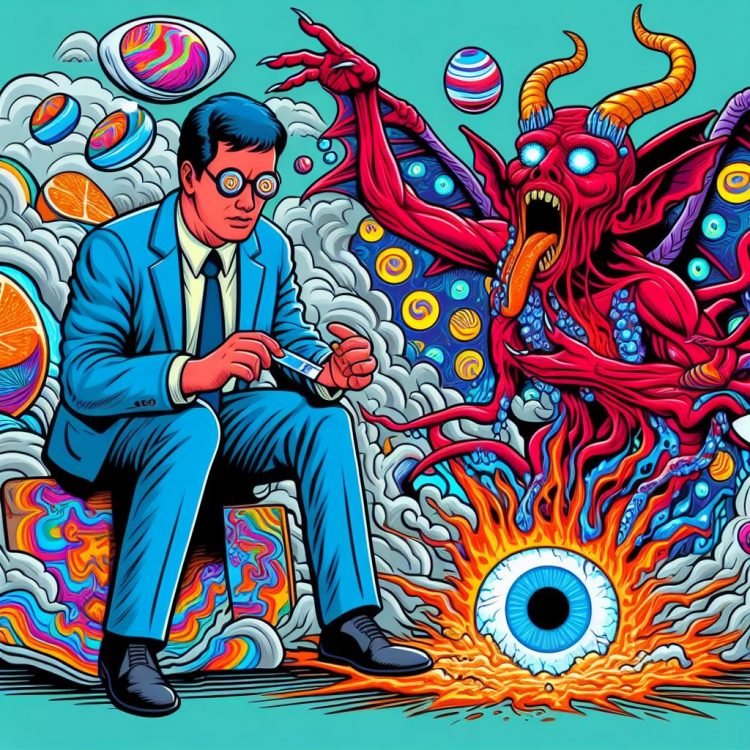
Psychedelics and shadow work
A common situation, where a person unwittingly enters into shadow work and finds it overwhelming, is when they find themselves taking psychedelics without proper preparation. For example, after having randomly taken them at a music festival. It’s funny how many people offering such diversions seem to have so little understanding of what they are potentially causing their “friend” to go through, and how little advice or after care they offer.
Psychedelics are substances that alter perception, cognition, mood, and sense of self, often inducing mystical or transcendent experiences (Nichols, 2016). However, these experiences can also be terrifying, confusing, or traumatic, especially if the person is not prepared for them or does not have a supportive environment or guidance.
This is because our shadows are not just lost and rejected aspects of our childhood selves. Jung spoke of the collective unconscious, and of the archetypes that dwell there and also influence us. Sometimes, those archetypes are the darkest of dark, and sometimes, during that “sweet trip”, it’s these that come forward.
Psychedelics can act as catalysts for shadow work, bringing to the surface the hidden or denied parts of oneself that need to be acknowledged and healed (Grof, 1985). However, this can also be overwhelming, as the person may face intense emotions, memories, fears, or fantasies that they are not ready to deal with.
Moreover, psychedelics can also tap into the collective unconscious, the shared psychic reservoir of humanity that contains the archetypes, symbols, myths, and patterns that shape our collective and individual psyche (Jung, 1959). These archetypes can be positive or negative, such as the hero, the mother, the trickster, or the shadow. The shadow archetype represents the dark side of human nature, the evil, immoral, or destructive impulses that we usually repress or deny (Jung, 1959). Sometimes, during a psychedelic trip, the person may encounter their own shadow or the collective shadow, which can be terrifying and disturbing.
Therefore, taking psychedelics without proper preparation can be a risky and dangerous endeavour. The person may not be aware of what they are getting into or what they may encounter during their trip. They may not have the psychological tools or resources to cope with the challenges or insights that arise. They may not have the support or guidance from someone who understands the nature and purpose of psychedelics and shadow work. Likewise, they may end up having a negative or harmful experience that leaves them traumatized, confused, or worse.
As one researcher put it: “Psychedelics are not for everyone. They’re not even for most people. They’re only for people who are willing to take a serious look at themselves and their lives” (Pollan, 2018).

The impact of resilience
Let us consider some examples of how shadow work can be done differently depending on one’s resilience and environment.
Suppose a person has a shadow trait of anger that they have repressed for a long time because they were taught that anger is bad and unacceptable. If this person has a high level of resilience and a supportive environment, they may be able to acknowledge and express their anger in healthy ways, such as through art, music, or physical activity. They may also be able to understand the root causes of their anger and address them constructively. They may see their anger as a source of energy and motivation, rather than as a problem or a threat.
On the other hand, if this person has a low level of resilience and an unsupportive environment, they may struggle to cope with their anger and may lash out at others or themselves in destructive ways. They may feel guilty, ashamed, or afraid of their anger and try to suppress it even more. They may see their anger as a sign of weakness or failure, rather than as an opportunity for growth.
Shadow work can be a beneficial or detrimental process depending on one’s level of resilience and the support available. Resilience can be enhanced by adopting a compassionate, accepting, and understanding attitude towards oneself and one’s shadow, as suggested by Rogers (1961). However, sometimes the environment can pose challenges or threats that make shadow work difficult or dangerous. In these cases, it is advisable to seek professional help from a counsellor who can provide a safe and supportive space for shadow work.
References
Awaken. (2022). A definitive guide to Jungian shadow work. Retrieved from https://awaken.com/2022/01/a-definitive-guide-to-jungian-shadow-work/
Eilish, B., & O’Connell, F. (2019). Bury a friend [Recorded by Billie Eilish]. On WHEN WE ALL FALL ASLEEP, WHERE DO WE GO? [Album]. Darkroom/Interscope Records.
Grof, S. (1985). Beyond the brain: Birth, death and transcendence in psychotherapy. State University of New York Press.
Jung, C.G. (1959). The archetypes and the collective unconscious. Routledge & Kegan Paul.
Jung, C.G. (1958). The undiscovered self: Present and future. Routledge & Kegan Paul.
Johnson R.A. (1993). Owning your own shadow: Understanding the dark side of the psyche. HarperOne.
Nichols D.E. (2016). Psychedelics. Pharmacological Reviews 68(2):264-355.
Pollan M. (2018). How to change your mind: What the new science of psychedelics teaches us about consciousness, dying, addiction, depression, and transcendence. Penguin Press.
Rogers, C.R. (1961). On becoming a person: A therapist’s view of psychotherapy. Houghton Mifflin.
Southwick S.M., & Charney D.S. (2012). Resilience: The science of mastering life’s greatest challenges. Cambridge University Press.
Wikipedia. (2023). Shadow (psychology). Retrieved from https://en.wikipedia.org/wiki/Shadow_%28psychology%29

















